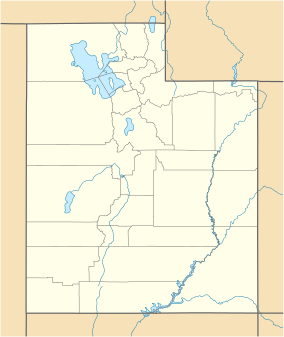Little Sahara Recreation Area
| Little Sahara Recreation Area | |
|---|---|
| Little Sahara Sand Dunes Little Sahara National Recreation Area |
|

Little Sahara sand dunes, April 2003
|
|
|
Location of Little Sahara Recreation Area within the State of Utah
|
|
| Location |
Juab County, Utah United States |
| Nearest city | Eureka, Utah |
| Coordinates | 39°43′34″N 112°18′24″W / 39.72611°N 112.30667°WCoordinates: 39°43′34″N 112°18′24″W / 39.72611°N 112.30667°W |
| Area | 220 square miles (570 km2) |
| Governing body | Bureau of Land Management |
The Little Sahara Recreation Area (previously known as the Little Sahara National Recreation Area) is a large area of sand dunes, hills and sagebrush flats located in the northeast corner of the Sevier Desert in Juab County in the west central part of Utah, United States.
The recreation area is managed by the Bureau of Land Management of the United States Department of the Interior. A 9,000-acre (36 km2) portion of the northwest corner of the facility has been designated as The Rockwell Natural Area and is off limits to vehicles to preserve and shelter desert plants and animals. Although the entire recreation area is located within Juab County, the dune field (which covers an area of 220 square miles [570 km2]), extends southwest into Millard County, nearly as far as the city of Delta. The Utah State Legislature designated this land a Utah state park in the 2017 Legislative Session.
The Little Sahara sand dunes are remnants of a large river delta formed by the Sevier River from about 12,500 to 20,000 years ago. The river emptied into ancient Lake Bonneville near the present day mouth of Leamington Canyon. After Lake Bonneville receded, winds transported the sand from the river delta to the current location. The dunes are still moving 5 to 9 feet (1.5 to 2.7 m) per year. One of the primary barriers to the sand movement are the Sand Hills, which are located entirely within the recreation area and substantially slow the movement of the blowing sand.
The sand consists of quartz grains, with minor amounts of feldspar, biotite, calcite, garnet and magnetite.
...
Wikipedia

